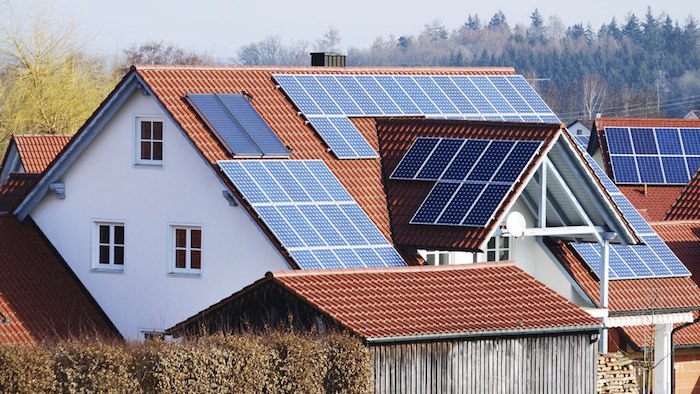Proper Solar Panel Orientation: Look West??

As more and more homes begin switching all or some of their power over to homegrown solar, a new trend is emerging that contradicts some widely held beliefs about the best place to put solar panels on the roof. While it's true that in the northern hemisphere we gain most power from having southward facing solar panels, having some or all of them aimed to the western sky may actually be more useful.
There's no debating the fact that south-facing solar arrays gather sunlight rather efficiently. For homes that are completely off-grid and supplying all of their own energy, south-facing panels gather energy all day long and recharge the home's batteries for use later in the evening and overnight.
But frequently, solar companies are installing solar panels on homes that are intertied, or still connected, to the electrical grid. These solar systems, depending on their size, usually generate only a portion of the home's electricity, the remainder of which is supplied via the grid from the power company, and there are no batteries to charge. The solar energy is used on-site as it's created, or if there's more energy than the home is using at the time, that excess power is sent back to the grid. This is where the orientation of the panels comes into question.
The daytime hours, when southward-facing panels are creating their power, are typically when most homeowners are not home, and residential energy use is lower. But facing those solar panels to the west, where they can capture the powerful late afternoon and evening sunshine, creates power during the time of the day when that power is needed more by the home itself, and by surrounding houses and businesses.
Think about it: The late afternoon/early evening is when we're all returning home from work, home from school, home from wherever we've been during the day. During the day the house has warmed up (because it's better to raise the A/C temp when we're away to save energy), all the lights, TVs, and other devices have been shut down for hours...Now we're getting home, turning on the A/C, turning on the TV, stereo, microwave, charging our phones and devices..... The power grid has a lot of work to do at this time of the day, and it needs a lot of power, and inconveniently this is the same time that the south-facing solar panels are winding down for the day; Doesn't it make sense to have our solar panels, at least some of them, facing the westward sky to let the sun do some of that heavy lifting rather than burning more coal or natural gas? Increasingly, the experts are saying that yes, it does make sense.
So why not change this? Incentives, for one thing. Those creating solar power at home are incentivized at a flat rate (or net meter) to create as much power as possible, not factoring in when it's most needed. Therefore, solar companies and solar leasing firms put those panels where they're going to get the most bang for the buck: facing south.
A study by Opower (read it here) has suggested ways to rectify this: First, through the use of solar trackers, which turn solar panels throughout the day to follow the sun's journey across the sky. These trackers are becoming more affordable (like solar in general) and will make economic sense to more as their prices drop. Second, increased research and development of new battery-storage technologies that will allow utilities to store, or "bank" power that's created any time of the day for use when it's most needed. And thirdly, the simplest option: simply have electric utilities pay a varying rate for power based on how much energy is needed at different times of the day. If more power is needed in the late afternoon, they pay more for the solar power coming from those west-facing panels than the south-facing ones that create power during slower periods.
Solar power continues to advance and evolve, and as it does these types of debates will continue to arise as solar companies, electric utilities, and residential solar customers dial in the perfect solar solution for all parties. One thing's for certain: solar power is only going to continue to grow as a viable economic and environmental alternative to traditional nonrenewable electricity. Stay tuned!
comments powered by Disqus


























































































































































































